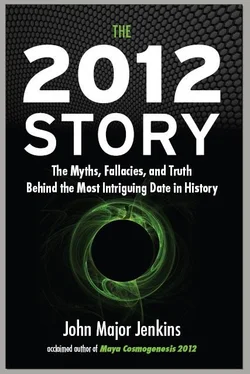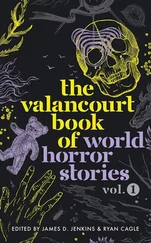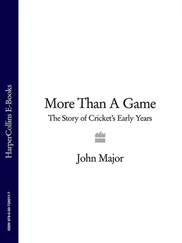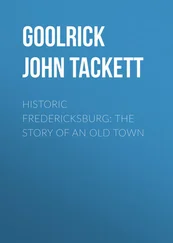In the late 1600s, Don Carlos de Sigüenza y Góngora rescued many documents from the archives during a fire that consumed the city. He studied the traditions of the Aztecs and claimed that the pre-Conquest Indians possessed advanced knowledge of mathematics and astronomy. Upon examining the pictographic manuscripts left by the Aztecs, he observed that they had a calendar of 52 years, today known as the Calendar Round. It was a combination of two native time-counts, one being 260 days and the other being a 365-day approximation of the solar year.
Sigüenza’s examination of the documents and pictographic manuscripts also enabled him to calculate a chronology of the pre-Conquest kings of Mexico. A primary supporting source for this work was the writings of Fernando de Alva Ixtlilxochitl, a descendant of Aztec royalty. During Sigüenza’s day and for some time thereafter, the family of Ixtlilxochitl were still the titular lords to the grounds of Teotihuacán, the great Central Mexican city of the early Nahuatl people that had thrived between 150 and 750 AD. Who were those mysterious people who once lived there? When did they build the city? The answers to these kinds of questions were unclear at the time, but breakthroughs were soon to occur. The grandeur and allure of the Pyramids of the Sun and Moon and the Street of the Dead would soon come to the notice of the world.
A traveler from Italy named Gemelli Careri arrived in Acapulco by boat in 1697 and learned of Sigüenza’s findings. Inspired and intrigued by Sigüenza’s work, he journeyed on ancient trails into the central plateau to visit the ruins. Making his way north of Mexico City by mule, he noted the abject squalor of the natives. After arriving, he was shown the site by Pedro de Alva, grandson of the famous Juan de Alva Ixtlilxochitl, and he learned of huge stone statues located on the tops of the Pyramids of Sun and Moon. The dramatic pyramids and long Street of the Dead at Teotihuacán must have been an incredible sight for Careri. Even for this seasoned world traveler, the scale of the remains was impressive, rivaling what he had seen on the Giza Plateau.
Careri’s six-volume opus Voyage Around the World was published (in Italian) in 1719. Quickly condensed and translated into other languages, it contained the first and best description of Mexico to reach the outside world. His book was a huge success, and his itinerant method of taking public transportation inspired Jules Verne to write Around the World in Eighty Days . However, many could not believe Careri’s observations of the pre-Conquest cultures of the New World, and he was roundly criticized as a fraud. The eighteenth-century Scottish historian William Robertson refused to include Careri’s findings in his highly inaccurate History of America (1777). Instead, he asserted that “America was not peopled by any nation of the ancient continent, which had made considerable progress in civilization.” The Mexicans and the Peruvians were not “entitled to rank with those nations which merit the name civilized.” 11
Another well-known historian of the mid-1700s, Cornelius de Pauw, wrote in his book Recherches Philosophiques sur les Américains (1769) that the so-called palace of the Mexican kings was no more than a hut. He criticized both Careri and Sigüenza, calling into question their reports of a sophisticated calendar with intricate wheels that calculated astronomical cycles over many centuries. Such a scenario was completely unbelievable to him, and without further examination he asserted that astronomical observations of this sort were “incompatible with the prodigious ignorance of those people” who “did not have words enough to count to ten.” 12This kind of prejudice has become woven into popular views of the native peoples of Mesoamerica such that even today we see rather loud echoes of it in movies like Mel Gibson’s Apocalypto . The History Channel’s “2012: Decoding the Past, Mayan Doomsday Prophecy” of 2006 also insisted on emphasizing salacious scenarios of sacrifice and violence, and committed a completely false assertion that the ancient Maya predicted doomsday in 2012.
These attitudes are thought to be the expressions of common sense, raw honesty, or healthy skepticism. The sentiments of de Pauw are found repeated in various guises down through the centuries, putting the brakes on how deeply we might dare understand the genius of Native Americans. And the ingrained problem can be difficult to detect, because “it often omits critical facts about both American Indian and European history. The fact that it is frequently written by well-respected scholars and authorities makes it even more difficult to detect. Like a low-grade infection, it works below the level of awareness, affecting students from elementary school to graduate school.” 13Here are some things that American Indians were doing all on their own: metallurgy, brain surgery, plant breeding, medicinal healing, mathematics, astronomy, massive architecture, art, music, and poetry. The gist of the prejudice is to not allow the Maya and other Native Amercian groups the same level of intellectual ability and cultural sophistication as that attributed to Western cultures. The problem has been endemic in scholarship. In the evolving understanding of the 2012 topic over the last twenty-five years, I’ve often encountered echoes of this attitude, an underinformed prejudice masquerading as coolheaded rationalism.
Throughout the 1700s few explorers and writers commented on the wealth of culture buried under the political tumult that was Mexico. But then, in 1790, a potential breakthrough came, one that by its sheer size and magnificence just might make a difference. The Aztec Calendar Stone, also known as the Sunstone or Eagle Bowl, was found under Mexico City and hauled up into the light. Because of its immense size and central location, it was probably a primary icon in the Aztec capital of Tenochtitlán that was destroyed by Cortés two and a half centuries earlier. Mexico in the 1790s was still a colony of Spain, its independence not to be won until 1821. Mexican writer Antonio de León y Gama analyzed the symbolism of the Sunstone and with an impressive amount of careful research combined with insight he revealed it to be a depiction of the ancient Mexican calendar system. But more than that, it was the slam dunk that proved a level of genius previously considered ridiculous. The ancients clearly observed the cycles of the sun, moon, and planets, and had devised a sophisticated calendar system to track those movements.
Up through the revolution for independence that culminated in 1821, traveling to New Spain was quite rightly viewed as a dangerous undertaking. Revolutionary violence was everywhere in a chaotic environment of unrest, and foreigners were suspect. In 1822, just after the Mexican Independence, an Englishman named William Bullock traveled to Mexico, entering by the Gulf Coast port of Veracruz. It was a quick but effective trip. Returning to London, he published a popular book, Six Months’ Residence and Travels in Mexico , in 1825. Bullock was part of a new phase of interest in Mexico. Romantic poets such as Shelley and Keats were capturing the imaginations of Europeans in the 1810s and 1820s, and the romance of Mexican ruins was irresistible. The Mexican Independence promised a new era of stability for the region, which was appealing to foreign visitors, and to outsiders Mexico was starting to look more like a land of opportunity.
Interest in the mysteries of Mexico was building. William Prescott’s monumental History of the Conquest of Mexico (1843) was a watershed work that made clear the scale of destruction exacted on the Aztec civilization by Cortés. A call to collect all the native documents of Mexico together in one place was expressed by von Humbolt, and a young Englishman named Edward King took up the challenge. Later known as Lord Kingsborough, he spent a fortune between 1831 and 1848 hiring lithographers and artists to copy and hand-color the original pictographic documents. When it was done, the massive nine-volume work was offered for a price equivalent to $3,500.
Читать дальше












